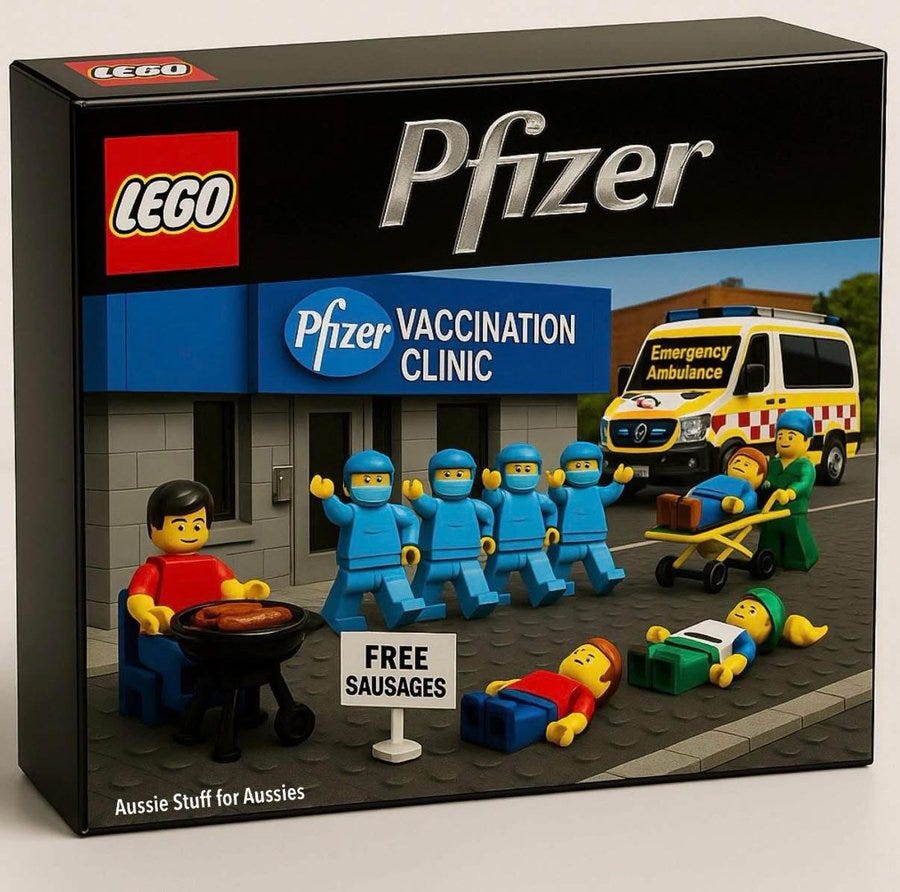Does Glyphosate Cause Cancer? - Part 2
Review of a large study in rats exposed to glyphosate daily for their entire life.
Public health concerns have increased since the International Agency for Research on Cancer (IARC) classified glyphosate as a probable human carcinogen in 2015. This study was promoted on X as “the definitive proof” that glyphosate causes cancer. Since I have written on this topic, finding that glyphosate exposed French farmers have lower risk of cancer vs the general population, I was curios to read this research.
In this study approximately 1000 rats, divided in several groups (3 types of pesticides at 3 dose levels, plus controls) were fed glyphosate and two GBHs, Roundup Bioflow used in the European Union (EU) and RangerPro used in the U.S., beginning at gestational day 6 (via maternal exposure) through 104 weeks of age. That’s the entire average lifespan of a rat. Glyphosate was administered through drinking water at three doses: the EU acceptable daily intake (ADI) of 0.5 mg/kg body weight/day, 5 mg/kg body weight/day and the EU no-observed adverse effect level (NOAEL) of 50 mg/kg body weight/day.
Results
In all 3 treatment groups, statistically significant dose-related increased trends or increased incidences of benign and malignant tumors at multiple anatomic sites were observed compared to historical and concurrent controls. These tumors arose in haemolymphoreticular tissues (leukemia), skin, liver, thyroid, nervous system, ovary, mammary gland, adrenal glands, kidney, urinary bladder, bone, endocrine pancreas, uterus and spleen (hemangiosarcoma). Increased incidences occurred in both sexes. Most of these involved tumors that are rare in SD rats (background incidence < 1%) with 40% of leukemias deaths in the treated groups occurring before 52 weeks of age and increased early deaths were also observed for other solid tumors.
The researchers concluded that glyphosate and GBHs at exposure levels corresponding to the EU ADI and the EU NOAEL caused dose-related increases in incidence of multiple benign and malignant tumors in SD rats of both sexes and stated that these results provide robust evidence supporting IARC’s conclusion that there is “sufficient evidence of carcinogenicity [of glyphosate] in experimental animals”.
Seems like a very straightforward piece of science. I must say that the study was conducted very well. The researchers used 3 dose levels of GLY, the highest dose being 100x higher than the allowable maximum exposure for humans in EU. The three concentrations selected for each pesticide test substance were 5, 50 and 500 mg/L of glyphosate in drinking water: the target exposure levels, based on mean water consumption (40 ml) and a mean body weight (400 g), corresponded to 0.5, 5 and 50 mg/kg bw/day. Therefore, the rats drank glyphosate, some in extremely high concentrations DAILY for their entire life, beginning in utero.
Let’s look at the resulting data.
First, pregnant rats drank glyphosate. Nothing really happened. There were no effects on the rats health, behavior, pregnancy, litter size, health of the pups, etc. - all was normal and not statistically different from the controls. Contrast this with Moderna and Pfizer vaccine studies in pregnant rats where the rats were very sick, losing fir and not eating after injections! Why is THIS study - a conclusive evidence of carcinogenicity of glyphosate, but vaccine studies are not? In addition, overall survival of the glyphosate-fed rats was not different from the controls.
Next, the tables for the cancer results by different pesticide tested:
As you can see from these tables, the “cancer causing” agents are very underwhelmingly cancer-causing. RangerPro seems to be the most toxic, having generated 4 cases of cancer at the highest dose (100x than allowable in EU) when fed daily for life. M-kay, yes, it does seem to cause 4% cancer risk, however, how likely is that someone would be exposed to this much pesticide in their life? Not at all. Roundup Bioflow seems to be the safest, and glyphosate is somewhere in between. What can we conclude from this? EU safety limits for glyphosate seem to be appropriate with respect to its carcinogenicity. Combining these results with previously discussed results of the AGRICAN study in French farmers, I can say that glyphosate might be a mildly carcinogenic products at extremely high and extremely long exposure. It is definitely not THE leading cause of cancer, and its carcinogenicity doesn’t come close to that of vaccines.
Speaking of which.
Cancer data after the rollout of the mRNA shots is absolutely staggering. The scientists in the glyphosate rat study with its rather meager rates of cancers confidently concluded that GLY is carcinogenic. However, scientists remain baffled at what might be causing this much cancer, especially in young people since 2021. The trends are starkly different between highly vaccinated and lower vaccinated states, yet, the scientists remain baffled! Data by Ethical Skeptic:
I am going to wrap up this discussion by underscoring yet again, that until we address the #1 cause of all chronic illness, including cancer - vaccines - nothing will change. Banning glyphosate will not change anything in the chronic disease epidemic, but, as previously discussed, may make matters worse via increased use of more toxic pesticides, unintended consequences for pollinators and other species, and increased food prices. I urge everyone to evaluate your favorite “toxic” issue against vaccines, and every time you will find that the scale and scope of damage by vaccines overwhelms anything else. Our goal should be stopping this monstrosity once and for all.
Art for today: Several readers asked, and I am making The Guardian available as a limited edition fine art print. You can order it here.










I don't take much stock in studies that expose animals to doses many times higher than they would ever be exposed to normally because I know the dose makes the poison. There is no good or necessary thing that cannot be made harmful or even fatal if you get too much of it. Even water can be fatal if you drink too much and people have died this way.
Researchers administer mega doses of the studied substance because they want something to happen quickly so they can collect their grant money and move on to the next grant. But in so doing, they sabotage their own experiments and render the results meaningless.
Clearly, when it comes to toxicity to life as we know it, vaccines are far and away, the deadliest poisons known to have been forced upon our species.
People will never find solutions to problems that they never look for.